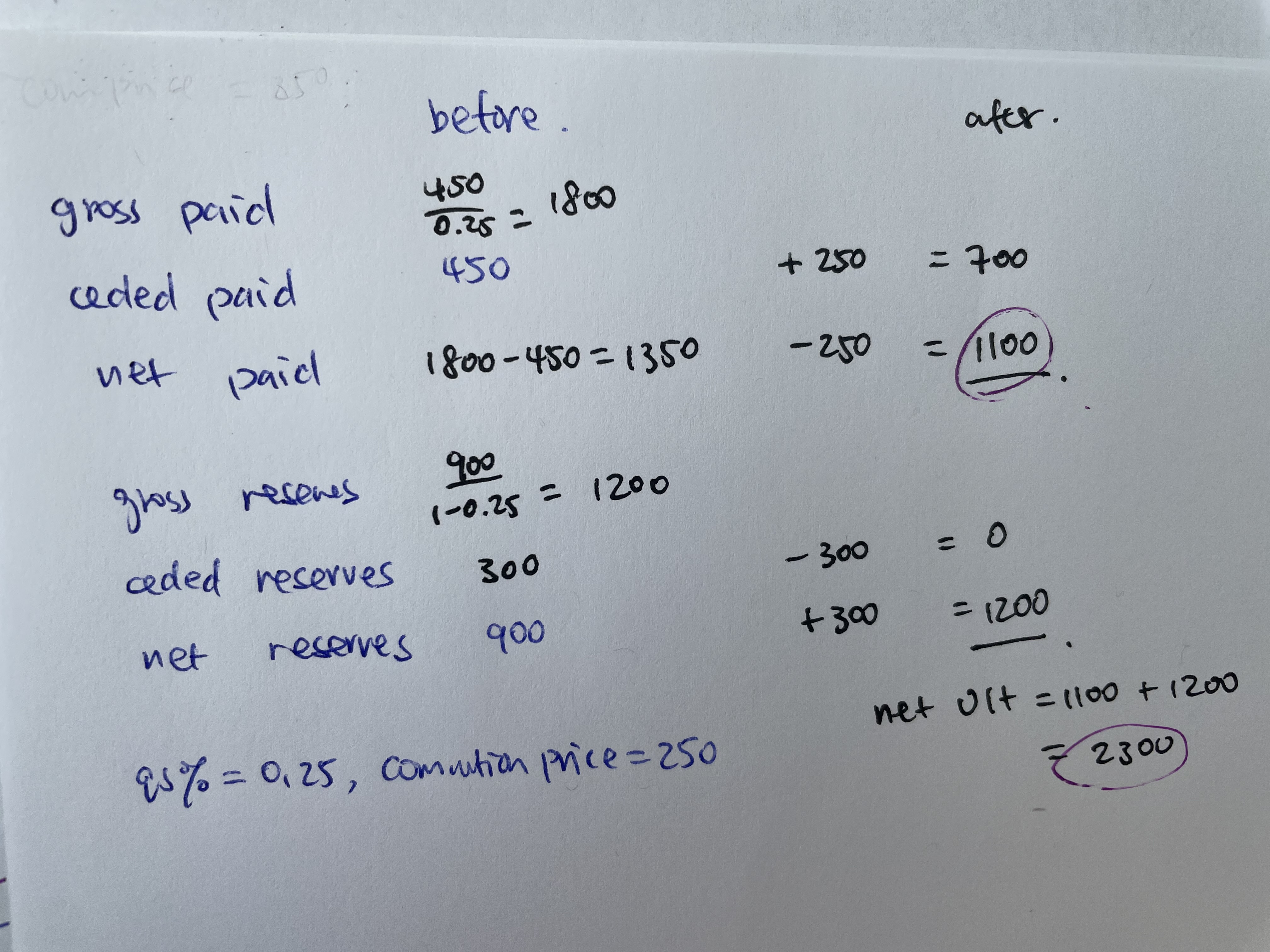2017 Fall Q27b
Looking at the solution guide for restating triangles after commutation - the final step of calculating the net ultimate loss after commutation seems overcomplicated. Is there a benefit to thinking of the solution using the sum of the net and ceded reserves without commutation? I was thinking of just using the Gross reserves without commutation.

Because we know that the ceded reserves will go to 0 after the commutation, we know that the net reserves after the commutation will equal the gross reserves before the commutation.
Then we can just use the gross reserves formula given [net resv / (1 - qs%)] rather than having to derive the ceded reserve formula and sum the net and ceded reserves.
Anyways - it was more helpful for me to think of the Net Ultimate Losses with Commutation as Net Paid Loss with Commutation (part i) plus Net Reserves with Commutation.
Then substituting using the fact that Net Reserves with Commutation = Gross Reserves Before Commutation (because Ceded Reserves with Commutation are 0), I just need to solve for the Gross Reserves since we know the Net.
Net Ultimate Loss w/Commutation = Net Paid Loss w/Commutation + Gross Reserves before Commutation
Just want to make sure this is equivalent to what is shown in the solution!
Comments
Yes, your way is equivalent to what's being done in the solution.
Graham was trying to explain in detail what was given as cursory additions in the examiner's solution, and that solution, for some reason, added ceded to net, instead of going directly from net to gross like you suggest.
I am with you. Also, instead of memorizing net paid = ceded paid * (1-qs%) * qs% and the rest of the steps I would like to list gross=ceded + net, ult=paid + reserves, gross=ceded/qs% for my calculations. and the rest will come easily.
Thx! I have linked to this discussion from this subsection in the wiki:
Hey where is the solution guide the Original Poster mentions here?
Solution guides are in the links in this table in the wiki:
https://battleacts6us.ca/wiki6us/Klann.ReinsComm#:~:text=I%27ve%20reworked%20the%20solution%20to%20part%20(b)%20from%20the%20examiner%27s%20report%20for%3A%20(See%20table%20below%20for%20the%20link%20to%20the%20reworked%20solution.)
Original poster was talking about Practice 1.